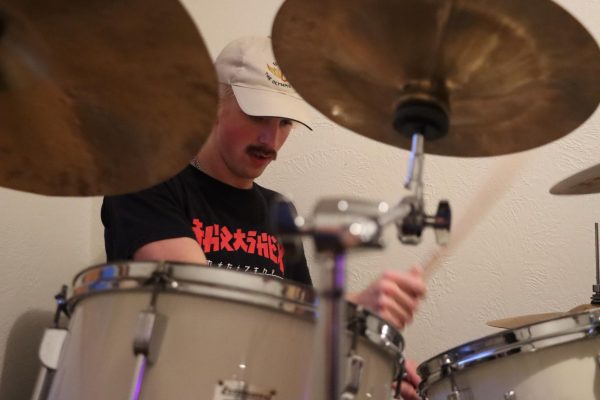‘There is no victory in strength’
The show ‘RWBY’ takes viewers into the world of monster-hunting
February 17, 2016
For a company that got started as a handful of guys messing around playing “Halo,” Rooster Teeth stepped up its game when it started making “RWBY” nearly three years ago.
“RWBY,” the brainchild of the now sadly deceased Monty Oum, is an original web animation telling the story of a group of students passing through a monster-hunting academy in the fantasy world of Remnant.
The cast quickly grows to the point where naming them all would be cumbersome and confusing, but the title of the show refers to the four main characters—Ruby Rose, Weiss Schnee, Blake Belladonna and Yang Xiaolong.
Every character in the show is named after a color and based on a fairy tale, mythical, or otherwise fictional character. The main four refer to Little Red Riding Hood, Snow White, Beauty and the Beast and Goldilocks. Other characters include Pinocchio, the Velveteen Rabbit and Achilles. Half the fun is figuring out the references.
Volume 1 serves to introduce viewers to the wonderful world of Remnant, a land where people cluster together for safety against the monstrous Grimm.
The tone is pretty lighthearted, alternating intense fight sequences with the sort of high school comedy hijinks one gets from kids with superpowers boarding together.
Volume 2 mostly works towards showing viewers the greater scope of the conflict—while the recurring villain from the last season is behind bars, his machinations served a greater purpose. It explores the role and the meaning of the job the characters are training for.
Volume 3 gives viewers character development, set against the backdrop of an inter-school tournament. This is the season when the story really grows teeth. The cast has grown, yes, and become substantially stronger than they were when the series began, but, as the narration points out in the very first episode of the series, “there is no victory in strength.”
Now, for all of my raving, what does “RWBY” struggle with?
The animation and voice acting in volume 1 shows its youth. Character movements don’t quite match up with how they’re actually moving, and at several points the models clip through each other, leading to odd visuals. Most of these issues are rectified in later seasons, though, so take from it what you will.
One of the biggest problems the animation team runs into is that the turnaround time for making episodes is tight.
They’ve submitted finales for DVD release mere hours after finishing the process of creating them, and the rushed job shows. Volume 2 suffered for this most visibly—in places the fights are rushed, simplistic and sloppy.
Easily the flashiest, most visually-appealing part of “RWBY” is the fight scenes. A stated goal of Oum was to preserve momentum in them, and it shows. Characters are constantly spinning, leaping and diving around the battles, moving in odd directions with the aid of their weapons. Each one is usually a combination of a melee weapon and a firearm, most notably Ruby’s sniper/scythe.
Combatants will frequently expend more ammo maneuvering than they do attacking their opponent.
Another aspect of the show that drew people in was the absolutely gorgeous music. The composition team manages to create a massive, versatile soundtrack for each volume that does wonders for enhancing the episodes’ moods. On top of that, each season features a number of vocal tracks that are just as jaw-dropping.
“RWBY” is a ride that starts off fun, but by the end of the current run (volume 3’s finale hit the Internet like a ton of bricks this Sunday), you’ll be saying, “I want off of Monty Oum’s wild ride” and wondering where that roll of tinfoil went. It’s worth a shot









